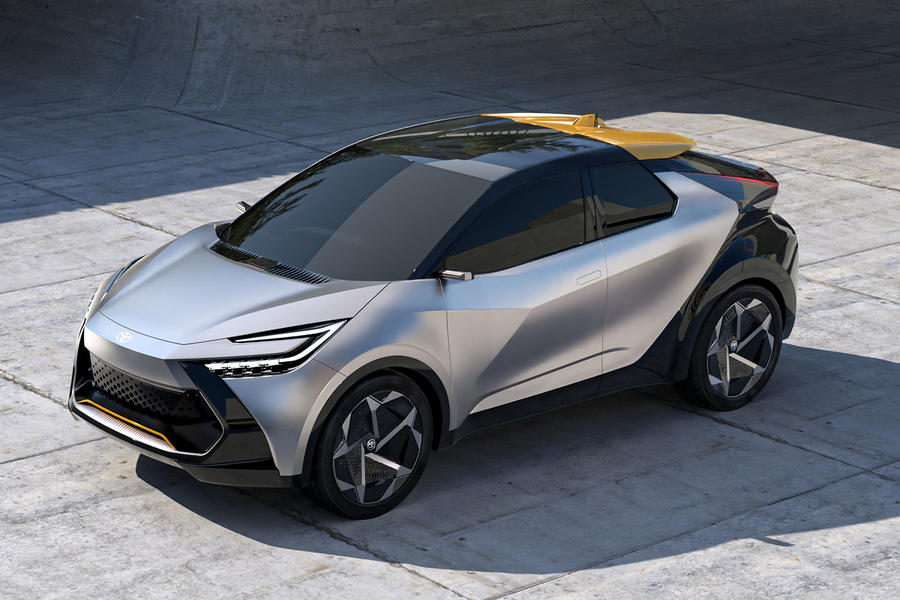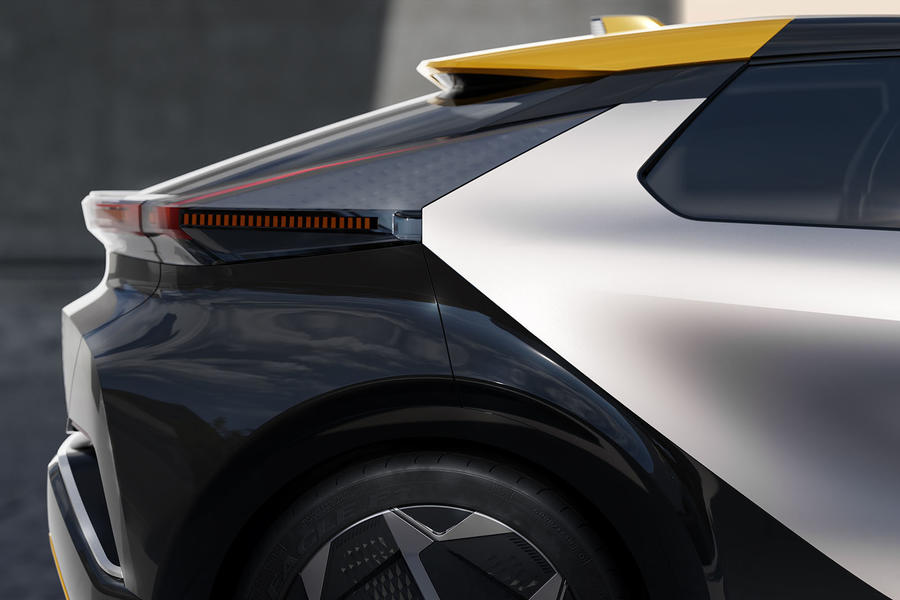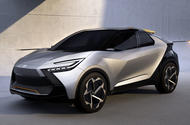The next-generation Toyota C-HR is due on sale by 2024
Hugely popular Nissan Juke rival adds plug-in hybrid option with Europe-built battery packs
The next-generation Toyota C-HR will be a radically styled, thoroughly reinvented proposition – available for the first time with a plug-in hybrid powertrain in addition to a full-hybrid system.
Due on sale by 2024, the striking second-generation C-HR will be closely related to the recently revealed Mk5 Prius, sharing the latest generation of Toyota’s TNGA architecture and offering the same choice of motive power.
It will be sold alongside a similarly styled but slightly larger electric SUV-coupé, previewed recently by the bZ Compact Crossover concept, as part of Toyota’s continued assault on the critical C-segment crossover market – a segment that it estimates will account for a huge 61% of its European sales in 2025.
Selling the two cars alongside one another – in the same way as the Toyota bZ4X and Toyota RAV4 co-exist – is an embodiment of Toyota’s continued commitment to a “multi-tech approach”, whereby it offers a range of powertrains in various markets – hydrogen fuel cell, hybrid, plug-in hybrid, pure-combustion and battery-electric – to cater to different buyer demands. Toyota calls this “The Power of And”.

Technical details remain under wraps as the Mk2 C-HR is revealed in concept-esque Prologue form.
However, Toyota has confirmed that the batteries for the PHEV variant will be produced in Europe – a first for the company – though has not yet confirmed exactly where.
It will be a variation of the PHEV powertrain now offered in the not-for-UK Prius, which pairs a 147bhp 2.0-litre four-cylinder petrol engine with a 158bhp electric motor on the front axle for a combined 221bhp. If this system is carried over wholesale, it will give the C-HR PHEV a 40bhp boost over the current 1.8-litre full hybrid.
It remains unclear whether the C-HR PHEV will use a 13.6kWh battery like the Prius, but if it does, a competitive electric-only range of more than 50 miles is well within reach.
The new C-HR Hybrid, which Toyota estimates will remain the biggest-selling variant, will use an evolved version of the current car’s drivetrain, with a subtle power boost to 191bhp.
Keeping this cheaper powertrain option, explained product manager Andrea Carlucci, was essential to preserving the C-HR’s “accessibility”.

The new car, like its predecessor, has been designed at Toyota’s European design headquarters in Nice, France, with the brief for it to be “still bold, still perhaps polarising”.
Autocar understands that the C-HR Prologue is as close to the production car as 2021’s Toyota Aygo X Prologue concept was to the corresponding supermini it previewed – and given that that car reached showrooms roughly a year later, a similar timeframe is expected here.
The overall silhouette – a clear evolution over the current car – will be retained, with shorter overhangs and wheels pushed to the corners signifying its “dynamic” remit.
Toyota calls the C-HR a “condensed stance monster” – a phrase it says defined the direction for the Prologue concept.
The overall look embodies what Toyota’s European design chief Lance Scott refers to as Toyota’s “precision organic” approach to design, whereby “two worlds, seemingly opposite, come together to create something new”.
He explained: “Precision is expressing the high technology, the accuracy and the crispness. Whereas organic is very much contrasting – with the fluid, natural and human values to the surfaces.”
Also appearing on the production car will be the new-look “Hammerhead” front-end design, which is being rolled out across the line-up to give Toyota cars a common identity.

Scott said the new front-end look is a by-product of the demands of new-era cars: “We know the cooling requirements for cars are decreasing. The high technology in the headlamps is making them thinner than ever before. So how are we going to keep a strong and bold identity?
“[The] European-market solution is to combine the slim headlamps – and potentially the sensors – into a very three-dimensional Hammerhead-looking shape to give this unique and bold expression and character for the future.”
A core component of the Prologue that’s less likely to make production is its striking tri-tone paint scheme. Bosses were keen to make the C-HR’s characteristic two-tone livery a key part of the design for the second iteration, painting the entire rear section a different colour to the front and using the shutlines as dividers, but the yellow spoiler and trim details seen here are likely to be left behind.
The C-HR is an integral part of Toyota’s European line-up, and indeed its success was cited as a key reason for not bringing the new Prius to the UK, it having sold 18,000 units here in 2021 over just 563 for the Prius.

The crossover, said Carlucci, has been “an incredible conquest machine” since its introduction in 2014, introducing Toyota to “a new breed of customer” who were previously “unfamiliar with us”.
The production car is expected to be revealed sometime around mid-2023 before a market launch in the final months of the year.
Expect the new C-HR Hybrid to command a premium over its predecessor, starting in the low-£30,000 range, with the PHEV adding a premium of around £5000.
Source: Autocar
